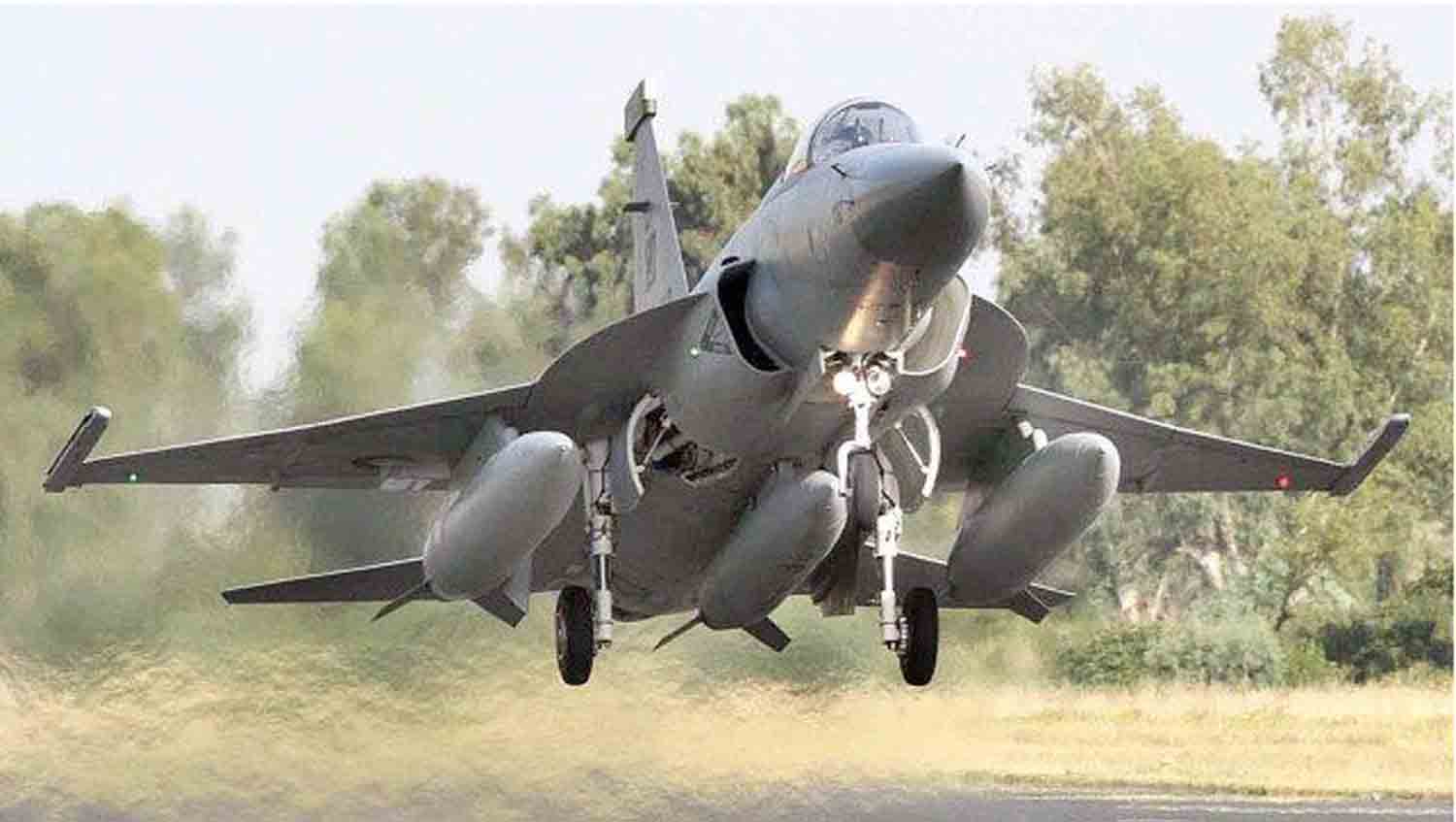Last year, Pakistan launched its most ambitious airpower initiative to date with the JF-17 PFX (Pakistan Experimental Complex), a next-generation version of the JF-17 fighter platform aimed at countering India’s advancing aerial capabilities and liberating the nation from dependence on foreign defense suppliers.
Presented to the public at IDEAS 2024 in Karachi, the JF-17 PFX is envisioned as the cornerstone of Pakistan’s future air combat strategy, indicating a significant shift towards a self-sufficient, high-end defense industrial base.
This advanced 4.5-generation fighter is specifically designed to compete with—and potentially surpass—regional adversaries’ leading platforms such as India’s Tejas Mk2, Rafale, and the Su-30MKI in both beyond-visual-range (BVR) and within-visual-range (WVR) engagements.
Pakistan’s vision for the PFX is to achieve strategic parity in the subcontinent’s airspace, allowing the Pakistan Air Force (PAF) to maintain a credible deterrent advantage over India’s growing airpower capabilities, especially in light of the Rafale-BrahMos integration.
Senior Pakistani defense officials claim that the PFX project will attain operational readiness before the decade concludes, with the aircraft set to become a transformative element in the PAF’s long-term force structure.
Pakistan Air Force drops another banger 🇹🇷🇵🇰
ACM Sidhu meets Turkish President Recep Tayyip Erdoğan.
– Joint development of Turkish KAAN/TFX/PFX
– Joint development of various aerial warfare related equipment
– Gives massive hints for export of JF-17 Thunder Block-III to… pic.twitter.com/OJRR1dKs9y— ENTEI (@ZEUS_PSF) September 8, 2024
A significant technological enhancement promised by the JF-17 PFX is its compatibility with a new generation of advanced air-to-air missiles (AAMs), including China’s state-of-the-art PL-17, which provides engagement ranges that were previously exclusive to fifth-generation platforms.
With a strike range of up to 400 kilometers, the PL-17 effectively doubles the maximum range of Western equivalents like the AIM-120D AMRAAM and MBDA Meteor, thereby redefining the BVR combat dynamics in South Asia.
Initially created for the J-20 “Mighty Dragon,” the PL-17—also referred to by its internal code PL-XX or “Project 180″—provides a revolutionary “first look, first shot, first kill” capability for targeting stealthy or high-value aerial threats. To fully leverage the PL-17’s combat capabilities, Pakistan may need to revamp the radar systems on its J-10C and future aircraft, enhancing existing AESA systems to meet the missile’s extensive targeting requirements.
The PL-17 utilizes an inertial navigation system (INS), GPS/Beidou positioning, an active AESA radar seeker for terminal guidance, and a mid-course data-link receiver—features that together facilitate high-confidence engagements at long ranges. The deployment of the PL-17 on Chinese J-10C fighters is already in progress, and its eventual integration into PAF platforms would significantly change the aerial dynamics of the India-Pakistan conflict landscape.
While the JF-17 PFX promises a significant advancement, it builds on the groundwork established by the JF-17 Block III, of which over 20 units have been delivered and production is nearing the 30-aircraft milestone. The Block III variant had its first flight in 2019 and began serial production in 2022, introducing substantial technological improvements that narrow the gap between fourth-generation aircraft and the emerging fifth-generation capabilities. Key upgrades in the Block III include the KLJ-7A AESA radar, Helmet Mounted Display and Sight (HMD/S), and a fully integrated electronic countermeasures (ECM) suite, all of which improve situational awareness and survivability in contested environments.
Its main armaments consist of the PL-15E long-range BVR missile, which is said to be capable of engaging targets beyond 200 kilometers, and the PL-10E high-off-boresight missile that utilizes HMD cueing for effective WVR combat.
In addition to its deadly capabilities, the Block III is said to be able to launch the “Taimur” air-launched cruise missile (ALCM), which can hit land and naval targets from a distance of up to 280 kilometers, thus serving as a credible standoff strike asset.
Experts have observed significant design similarities between the JF-17 Block III and the Chinese J-10C, with some sources indicating that the former integrates avionics and aerodynamic features that can be traced back to the stealth lineage of the J-20.
Nevertheless, the JF-17 PFX seeks to surpass mere evolutionary enhancements, marking Pakistan’s entry into the domain of strategic defense autonomy by developing the aircraft’s radar systems and essential components domestically.
This represents a notable departure from the traditional reliance on Chinese defense technology and positions Pakistan as a potential exporter of affordable, high-performance fighter solutions for the Global South, especially in regions like Asia, the Middle East, and Africa.
Nations such as Myanmar, Iraq, Azerbaijan, and Egypt have reportedly shown interest in PAF platforms, viewing them as practical alternatives to pricier Western fighters that are often limited by political conditions or export limitations.
On a doctrinal level, the PFX is anticipated to bolster Pakistan’s evolving strategy of distributed lethality, advanced electronic warfare, and potentially nuclear-capable second-strike delivery roles—transforming the PAF into a genuinely multidomain-ready force.
This transformation is also expected to heighten regional arms competition, with India fast-tracking its fifth-generation HAL AMCA program and improving its Rafale fleet’s weapons integration with Meteor and SCALP missiles.
The strategic deployment of the PFX aligns with a larger global trend in which developing nations are increasingly investing in their own military-industrial capabilities to circumvent traditional geopolitical limitations and sanctions.
In this scenario, the JF-17 PFX transcends being just a fighter jet; it serves as a significant geopolitical declaration—a representation of Pakistan’s determination to confront regional power structures, redefine military independence, and enhance its influence in the global defense landscape.
As the PFX initiative gains traction, Pakistan’s aspirations in defense aerospace now reach well beyond achieving parity with India, instead seeking a pivotal role in shaping the future of cost-effective, sovereign airpower in a multipolar world.
Discover more from Defence Talks | Defense News Hub, Military Updates, Security Insights
Subscribe to get the latest posts sent to your email.





